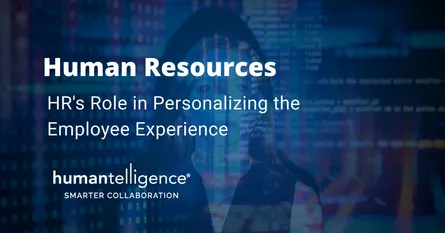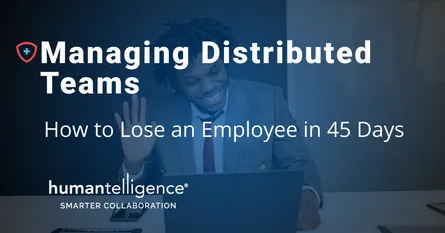
Productivity Abundance: Using HR Tech to Unlock its Power
- Humantelligence
- Technology , Tools
- 05 Feb, 2024

In a 2024 trends and outlook piece, Josh Bersin said that that C-suite leaders are being pressured to “hoard talent, invest in productivity, and redevelop people for growth.” Bersin called it The Productivity Advantage. This productivity abundance strategy entails improving pay equity, continuing hybrid work models, investing in human-centered leadership, and giving people opportunities for new careers inside the company. This is why talent marketplaces, skills-based development, and learning in the flow of work are so important.
“If you can help your company move faster, you can reinvent faster than your competition.” Like many leaders in the business world, Bersin also predicts that leveraging AI for processes will be key to achieving productivity.
Productivity Abundance for Teams
In an era dominated by rapid technological advancements, adaptability and forward-thinking strategies are in demand. According to McKinsey, companies that are agile in this aspect are redefining operational excellence, maximizing returns from both talent and software investments while fostering innovation to drive growth.
McKinsey researchers also point out that digital and AI transformations can more closely unite business operations while also enhancing workforce skills and empowering teams to innovate. This indicates that output doesn’t have to come at the cost of personal creativity or the human aspects of our work. Technology can facilitate positive results for both the business bottom line and the wellbeing of the workforce, say the report’s authors, leading to collective prosperity for the totality of the organization.
From Productivity to Human Performance
According to Deloitte, the once-straightforward correlation between individual tasks and tangible outcomes has become blurred in today’s complex, collaborative environment. Traditional metrics—like hours worked or widgets produced—are no longer sufficient in measuring success, especially with the rise of technology and AI automating routine tasks.
Those forward-thinking businesses won’t only calculate success by conventional measures like revenues and profits, according to Deloitte’s findings, but also consider the job satisfaction of individuals and teams. Deloitte identifies this shift as embracing a new paradigm centered around human performance, one that emphasizes the value of factors like employee happiness, psychological safety, and growth and development.
“New approaches can and should consider the worker as a human being, with a more nuanced perspective on how they contribute to the organization,” according to Deloitte. Even in fields like logistics and manufacturing, where productivity indicators seem most relevant, automation can free up the workforce for other objectives, such as developing “creativity, critical thinking and collaboration” skills, say the researchers.
Analysts point to the following indicators that reframing productivity with a focus on human performance is right for your organization if:
- There’s a narrow focus on output rather than broader organizational outcomes.
- Leaders feel inundated by data and seek to measure what truly drives success.
- Despite technological investments, traditional productivity remains stagnant.
- Workers engage in “productivity theater” to appear busy, but they feel burnt out.
If this sounds like your team or workplace, you aren’t alone. When Deloitte surveyed 14,000 business and HR leaders across many sectors in dozens of countries, only 8 percent said their organization is leading in the use of human performance metrics.
As tools for capturing workforce data expand beyond traditional metrics like hours clocked, HR teams are discovering solutions that measure collaboration, satisfaction, engagement and more. Deloitte suggests that leveraging new data sources empowers leaders to transition from merely assessing employee productivity to evaluating overall human performance.
Thanks to a rush of innovation driven by AI, a new class of HR tech tools offers exponential capacity for businesses to collect, measure and analyze data. Supported by machine learning and human judgment, Deloitte’s researchers say HR teams are in a unique position to convert the data into actionable suggestions.
Productivity Abundance through Smarter Collaboration
We’re at a stage where hybrid and remote working have moved from being an employee request, to an employee expectation. Business leaders need to embrace this change, making a concerted effort to create a working environment for talent that makes it easy for employees to work together–the key to team productivity and productivity abundance. Failure to do so will see businesses struggle to attract and retain their best talent and they will continue to be at a competitive disadvantage.
A recent American study of 1,100 companies carried out by the Institute for Corporate Productivity and Babson College found those that promoted collaborative working were five times more likely to be high performing and producing.
Just how much does collaboration increase productivity? The benefits of using AI-powered collaboration tools are real. Collaboration increases productivity abundance by 25% or more. A comprehensive workplace study by McKinsey looked specifically at the effect of improving collaboration through improved internal social tools, so it’s likely that the total effect of collaboration increases productivity by even more than 25%.
Employees Value Workplace Collaboration & Productivity Abundance More Than You Think
More than 50% of workers in the United States say their jobs are reliant on collaboration.
- 86% of employees in leadership positions blame lack of collaboration as the top reason for workplace failures.
- About 75% of employees rate teamwork and collaboration as being very important.
- Employees are 17% more satisfied with their job when they engage in collaboration at work.
Over the last 20 years, workplace collaboration has increased by at least 50%.
- Top-performing workers spend 45% of their time working collaboratively.
- Only 9% of surveyed employees in a Deloitte study reported that their place of employment had very effective sharing and collaboration tools.
Collaborating on tasks and sharing ideas is valued at $1,660 per employee each year and that quality improvements made as a result of workplace collaboration are valued at $2,517 per employee each year. (Deloitte) And companies that promote collaboration at work have 5x better performance rates.
At the end of the day, focusing on workplace collaboration in the context of the employee experience and a more human-centered collaboration strategy doesn’t just help your people; it also helps the company. An employee who feels connection to others is an employee who is most likely to engage. And an employee who can fully engage is an employee who feels compelled to stay. That means you stave off the risk of the lost productivity that can arise when turnover is rampant or a worker shortage hits.
To learn how you can use leverage tools to increase team productivity, let’s connect.

